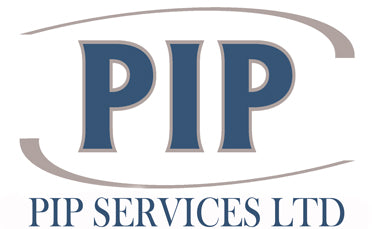Falls from height remain one of the leading causes of serious injury and death in the UK construction sector. According to the Health and Safety Executive (HSE), nearly one-third of all fatal workplace accidents in construction involve working at height. Whether it's roofing, scaffolding, or accessing mezzanine levels, understanding and applying the right safety measures can save lives, and keep your site compliant.
This blog post provides UK-focused best practices for working safely at height under the Work at Height Regulations 2005.
The Legal Framework: Know Your Duties
Under the Work at Height Regulations 2005, employers, site managers, and workers have clear legal responsibilities:
- Avoid working at height when possible.
- If unavoidable, prevent falls using the right equipment.
- If risk remains, minimise the distance and consequences of a fall.
This applies to anyone managing or performing work at height, including contractors, scaffolders, maintenance teams, and builders.
Step-by-Step: Best Practices for Working at Height
1. Plan the Work Thoroughly
All work at height must be properly planned and supervised. This includes:
- Site-specific risk assessments.
- Planning for weather conditions, particularly high winds or rain.
- Scheduling tasks to reduce time spent at height.
- Considering edge protection and access methods in the early design phase.
Tip: Don’t leave working-at-height planning until the build starts. Consider safe access in design and tender phases.
2. Use the Right Access Equipment
The most common methods in UK construction include:
| Method | Best For | Note |
| Scaffolding | Prolonged work | Must be erected by trained and certified personnel (CISRS cardholders) |
| MEWPs (cherry pickers, scissor lifts) | Flexible access | Ensure ground is level and operators are IPAF-trained |
| Ladders | Short-duration work (less than 30 minutes) |
Only when other safer options are not reasonably practicable |
Tip: Ladders are not banned—but they must be justified, stable, and used only for light work.
3. Edge Protection Is Essential
Guardrails, toe boards, and mid-rails must be installed on all platforms, roofs, or floor edges where there's a risk of falling.
If collective protection is not possible, fall arrest systems (e.g. harnesses and inertia reels) must be used, only by trained operatives and with full rescue plans in place.
4. Inspect Equipment Regularly
Working-at-height gear must be inspected:
- Before every use.
- Weekly for scaffolding and MEWPs.
- Every 6 months for fall arrest PPE (or more often in harsh environments).
Inspections must be recorded and available on request.
5. Train Everyone Involved
Everyone involved in working at height; whether planning, supervising, or operating equipment must be competent.
That means:
- Formal training (e.g. PASMA for towers, IPAF for MEWPs, CISRS for scaffolds)
- Site-specific induction on fall risks
- Toolbox talks on new or changing risks
Competence is a mix of training, knowledge, and experience.
6. Prevent Falling Objects
Falling materials pose just as much risk to people below as falls do to those working above. Use:
- Toe boards and debris netting.
- Tool lanyards.
- Secure load zones with exclusion barriers.
Note: You have a duty to protect everyone who may be affected by your work; including workers, visitors, and the public.
7. Weather: Don’t Ignore It
Wind, rain, and ice significantly increase risks when working at height. For example:
- Roofers can slip.
- Scaffold planks can become unstable.
- MEWPs can tip if wind exceeds manufacturer limits.
Always monitor forecasts, and stop work when conditions make it unsafe.
8. Have a Rescue Plan
If someone falls while using a fall arrest system, you must have a plan for safe recovery. Calling 999 is not a rescue plan.
Key components include:
- Rescue kits (e.g. winch systems).
- Trained team members on site.
- Clear procedures practiced during drills.
Delays in rescue can lead to suspension trauma, a potentially fatal condition.
Real-Life UK Cases: Why It Matters
Case: Worker Falls Through Fragile Roof
In 2024, a roofing contractor was fined £70,000 after a worker fell through a fragile asbestos-cement roof in Kent. No crawling boards or harnesses were used, despite obvious risk.
Lesson: Always treat roofs as fragile unless proven otherwise, and use crawling boards, covers, or fall prevention systems.
Case: Painter Falls from Ladder
A self-employed painter fell from a ladder while painting exterior walls in Lancashire. No supervision, no ladder foot stabilisation. He fractured his spine.
Lesson: Short jobs still require risk controls. Ladder use is only safe with planning, supervision, and correct angle setup.
Quick Working at Height Safety Checklist for UK Site Managers
- Has the work at height been planned and risk-assessed?
- Is there a safer alternative to working at height?
- Are workers trained and competent?
- Is access equipment inspected and suitable?
- Are edge protections or harnesses in place?
- Have falling object risks been controlled?
- Is there a weather and rescue contingency plan?
Final Thoughts
Working at height is one of the most hazardous parts of construction, but the risks are manageable with the right systems. UK law is clear: if you can’t do it safely, don’t do it at all.
Start with planning, invest in training and inspections, and never cut corners, because even small lapses can lead to life-altering injuries or criminal charges.
Why choose PIP Services for your health and safety consultancy?
We’re dedicated to providing the highest level of advice on all Health and Safety related matters and will assist companies in meeting their obligations. We offer a wide range of Health & Safety Services for a variety of clients. We represent many companies and deal with all of their Health & Safety matters.
We’re also an accredited CITB, NEBOSH, IOSH, IWFM & CITB training provider, as well as a ProQual-approved NVQ centre.
We are rated 4.9/5 on Trustpilot, and you can read our reviews here. If you would like to speak to us about your training needs, please get in touch using the button below.

